Pull-ups are one of the most fundamental exercises for building upper body strength. Whether you're a beginner or you've been trying to master them for a while, the journey to doing multiple pull-ups can be challenging. But with the right techniques, tips, and progressions, anyone can improve their pull-up performance.
This comprehensive guide will explore the steps, strategies, and exercises to help you improve at pull-ups. By the end of this article, you'll have actionable tips and a clear progression plan that will transform your pull-up game.
The Importance of Pull-Ups and Why They Matter
Pull-ups are powerful for building back, arm, and shoulder strength. But for many beginners, performing multiple pull-ups can seem daunting. Whether you're struggling with just one pull-up or aiming to increase your repetitions, the challenge lies in understanding the right progression and strategies to strengthen the muscles.
Did you know that over 50% of people can't do a pull-up? While this might sound discouraging, it also underscores the importance of focusing on effective progressions to improve your ability to perform this essential exercise. Mastering pull-ups boosts your strength and endurance and improves overall fitness and posture.
This guide'llguide will provide expert-backed tips, proven techniques, and actionable progressions to help you improve at pull-ups. Let's get started!
Mastering Pull-Ups—Progressions and Tips for Beginners
1. Understanding the Muscles Involved in Pull-Ups
Before diving into the techniques, it's crucial to understand the muscles that play a role in performing pull-ups. Pull-ups primarily target:
- Latissimus Dorsi (Lats): The large muscles in the back responsible for pulling your arms downward.
- Biceps: The muscles in the upper arms that bend the elbows during the movement.
- Rhomboids and Trapezius: Upper back muscles that stabilize and retract the scapula.
- Core Muscles: These muscles stabilize the body and maintain proper posture during the exercise.
Understanding which muscles are activated during a pull-up helps you tailor your workouts to improve strength in the right areas.
2. Proper Form for Pull-Ups
Proper form is essential to maximizing your performance and reducing the risk of injury. Here's how to execute a pull-up with the correct form:
- Grip: Begin by gripping the pull-up bar with your palms facing away from you (overhand grip) or towards you (underhand grip). Your hands should be shoulder-width apart.
- Hang: Start in a dead hang position with your arms fully extended. Keep your core engaged, and avoid swinging your legs.
- Pull-up: Drive through your elbows, pulling your body upward until your chin is over the bar. Make sure to squeeze your shoulder blades together at the movement stop.
- Descent: Lower yourself slowly, resisting gravity, until your arms are fully extended again. Control the motion to maximize muscle engagement.
It's critical to avoid using momentum (such as swinging your body) and instead focus on a controlled and smooth movement.
3. Progressions for Beginners
If you can't yet perform a full pull-up, don't worry! There are several progressions to build the necessary strength and endurance:
a. Assisted Pull-Ups
Assisted pull-ups are a great way to work up to a full pull-up. Use a resistance band or an assisted pull-up machine, or have a training partner help you lift some of your body weight. This reduces the load on your muscles, allowing you to perform the movement with proper form.
Start with a light band or low assistance and gradually reduce the support as you strengthen. Over time, you'll build the strength needed for unassisted pull-ups.
b. Negative Pull-Ups
Negative pull-ups focus on the eccentric phase of the movement—lowering yourself slowly from the bar. Jump up to the top of the pull-up position and lower yourself as slowly as possible.
Negative pull-ups are excellent for building the muscles to perform a full pull-up. To effectively engage your muscles, aim for a slow descent of 3-5 seconds.
c. Australian Pull-Ups (Body Rows)
Also known as inverted rows, Australian pull-ups are performed with your body positioned at an angle underneath a low bar. Grab the bar with your hands shoulder-width apart, then pull your chest towards the bar while keeping your feet on the ground.
This movement mimics the pulling motion of a full pull-up but with less intensity, making it a perfect progression for beginners.
d. Scapular Pull-Ups
Scapular pull-ups are foundational to building the strength in your shoulder blades needed for a full pull-up. Start by hanging from the pull-up bar, then focus on pulling your shoulder blades down and together without bending your elbows.
This exercise helps you develop the necessary scapular stability critical for a pull-up's initial phase.
e. Lat Pulldowns
Lat pulldowns are another excellent exercise to strengthen the lats and arms, helping you build the strength required for pull-ups. Use a lat pulldown machine or a resistance band to perform the movement, mimicking the pulling action of a pull-up from a seated position.
4. Training Tips to Improve Pull-Ups Faster
Now that you have a progression plan, it's time to optimize your training with these additional tips:
a. Consistency is Key
Pull-ups require regular practice to improve. Aim to train your pull-up muscles 2-3 times a week, giving your body enough recovery time between sessions. Consistency will lead to gradual strength gains over time.
b. Focus on the Full Range of Motion
Performing exercises that target the full range of motion is crucial. Whether you're doing assisted or negative pull-ups, always aim to move through the entire range of motion. This ensures that all muscle fibers are engaged and your muscles grow stronger as you progress.
c. Improve Grip Strength
Grip strength plays a major role in the ability to perform pull-ups. Practice exercises like dead hangs, farmer's carries, or wrist curls to increase your grip strength, which will help you hold onto the bar for longer periods during your pull-up sets.
d. Incorporate Pull-Up Variations
Once you're comfortable with standard pull-ups, start incorporating different variations into your routine to target different muscles and prevent plateaus. Some examples include:
- Chin-ups (palms facing you)
- Wide-grip pull-ups (hands wider than shoulder-width)
- Close-grip pull-ups (hands close together)
5. Rest and Recovery for Pull-Up Progression
Rest and recovery are just as important as training to improve your pull-up performance. Overtraining can lead to injury, so give your muscles time to recover between sessions. Focus on getting enough sleep, eating a protein-rich diet to support muscle growth, and incorporating stretching or foam rolling to improve flexibility.
Research & Sources
To support these claims and strategies, we reference credible sources such as expert opinions and proven studies from top fitness organizations. For instance, a study published in the Journal of Strength and Conditioning Research revealed that eccentric training (like negative pull-ups) significantly enhances strength and muscle hypertrophy, which directly translates to improved pull-up performance.
The American Council on Exercise (ACE) also emphasizes the importance of proper form and gradual progression for beginners, ensuring safety and long-term progress in strength training.
These authoritative resources underscore the importance of following a structured and methodical approach to mastering pull-ups.
FAQ (Frequently Asked Questions)
Q1: How long does it take to get better at pull-ups?
A1: The time it takes to get better at pull-ups varies from person to person. However, with consistent practice and proper progression, most people can perform their first unassisted pull-up within 4-8 weeks.
Q2: What's the best exercise for improving pull-ups?
A2: Negative pull-ups, assisted pull-ups, and body rows are some of the most effective exercises for building the strength required to perform a full pull-up.
Q3: How many pull-ups should I aim for as a beginner?
A3: As a beginner, aim to complete one to three pull-ups, gradually increasing as your strength improves. Focus on perfecting your form first, then work on increasing your repetitions.
Q4: Can I do pull-ups every day?
A4: While practicing regularly is important, doing daily pull-ups may lead to overtraining. Aim for 2-3 weekly pull-up sessions, with rest days in between to allow your muscles to recover.
Conclusion: Take Your Pull-Ups to the Next Level
Improving at pull-ups is a journey that requires patience, consistency, and the right progression plan. Following the tips and strategies outlined in this guide can significantly enhance your pull-up performance, build strength, and see measurable improvements over time.
Remember, mastering pull-ups isn't about lifting your body weight immediately—it's about progressing through the right steps and trusting the process. Keep practicing, stay consistent, and you'll perform pull-ups like a pro before you know it.
For more advanced fitness tips and strategies, visit Hamilton Home Fitness. Our expert-led resources are designed to help you achieve your fitness goals with cutting-edge techniques and advice.
Ready to take your pull-up journey to the next level? Start training today, and don't forget to share your progress with us!







